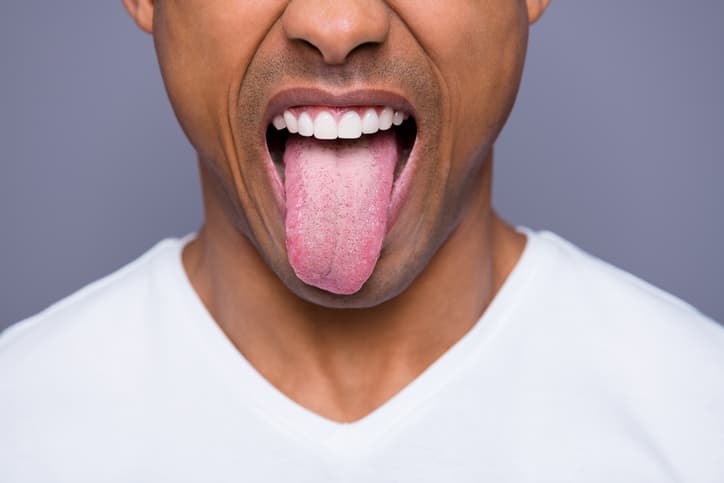
What Are Those Bumps on Your Tongue?
Coated with four types of papillae, the tongue is an integral organ within the mouth that assists in taste, speech, chewing and swallowing. There are four types of papillae, according to the Encyclopedia of Neuroscience and the National Center for Biotechnology Information:
- Filiform: Filiform papillae do not contain taste buds. They’re located mostly on the centre and back of the tongue and are sparse on the sides.
- Fungiform: There are 200 to 400 fungiform papillae on the tongue, making them the most common. They are located on the tip and sides of the tongue, and they are sensitive to taste by distinguishing between sweet, sour, bitter and savoury flavours, as well as temperature and touch.
- Circumvallate: These papillae so large that you can see them with the naked eye. They’re located at the back of the tongue closer to the throat.
- Foliate They are smaller in size and you can see the foliate type with your own eyes. Foliate papillae line the sides of the tongue and in front of the circumvallate papillae.
How Do Papillae (Tongue Bumps) Get Enlarged?
When you notice an enlarged papilla develop, it can feel very odd. The nerve receptors on the tongue are very sensitive. Do not be alarmed. Most of the time this process is not serious. The condition called transient lingual papillitis occurs when papillae become inflamed or irritated, explains a study in the Journal of Clinical and Experimental Dentistry. This can occur from accidentally biting your tongue when you chew, having a virus pass through your body, or normal exfoliation of the papillae cells.
Certain other medical conditions can also make papillae feel different. One of these conditions is benign migratory glossitis (also called geographic tongue). In this condition, the tongue exfoliates its cells at an inconsistent rate, giving the tongue a map-like appearance that shows that the papillae have worn off and then eventually regrow, says the Mayo Clinic. Other conditions that may contribute to papillary inflammation include bacterial or fungal infections, canker sores, allergic reactions, syphilis, oral herpes simplex, cancer or autoimmune disorders.
Is Treatment for Enlarged Papillae Necessary?
It is often unnecessary to seek treatment for tongue bumps unless the condition lasts longer than seven to 10 days. The best advice for any oral lesion lasting longer than seven to 10 days is for the patient to schedule an evaluation with their dental professional. Monitoring the size, colour and location of the lesion will aid your dental professional in their assessment. If lesions bleed, become increasingly painful, grow in size or spread, it is recommended that patients seek immediate care.
Routine, thorough home care is the best way to maintain a healthy mouth. Brush twice daily and don’t forget to brush your tongue! Allowing the lesions time to heal, rinsing with warm salt water, and drinking lots of water also have been found to be successful in treating inflamed or enlarged papillae.
How Can You Prevent Enlarged Tongue Bumps?
Injuries to the tongue can be prevented by wearing mouthguards while playing sports, eating slowly, and being more aware of tongue placement. Not participating in high-risk behaviours, such as smoking cigarettes, and decreasing stress also may decrease the likelihood of dealing with enlarged tongue bumps.
